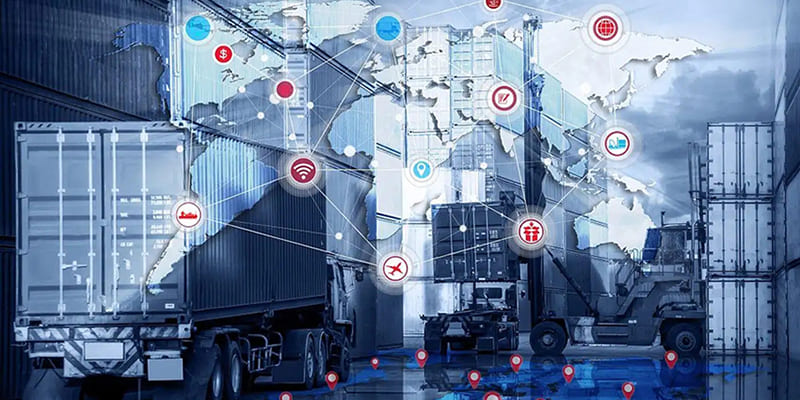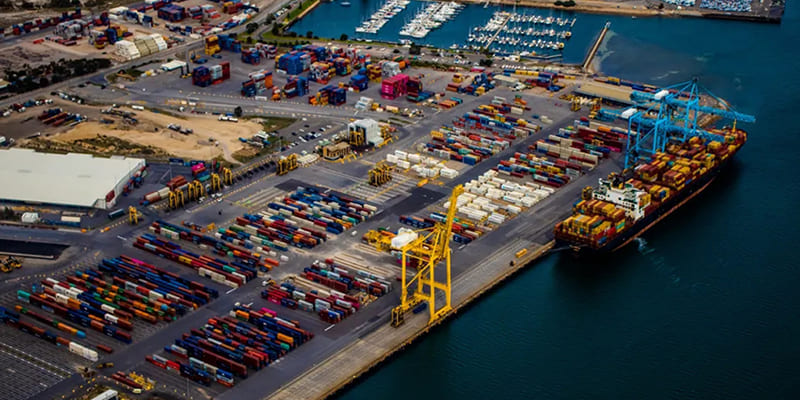After the epidemic, how can the global supply chain jump out of the dilemma of transformation?
From cars to pharmaceuticals to cell phones, large companies typically distribute production efficiently to low-cost areas and keep inventory levels low throughout the supply chain.
This is certainly a sound strategy, but the vast majority of people have difficulty predicting the emergence of a pandemic.
Consistent with its previous policies, the U.S. government reiterated its desire to improve U.S. supply chains and bring back critical manufacturing. His ultimate goal is to produce everything Americans themselves need and export to the world, including some essentials.
The Japanese government announced in early April that it would provide subsidies to support Japanese companies to relocate production capacity to China, or to diversify the industrial chain by dispersing them to ASEAN countries. The country’s auto parts maker Yachiyo Industries has switched to air freight for some car sunroof parts from China to Japan.
The French government has announced that it will examine which industries need to develop “Economic and strategic independence”. Through this epidemic, it can be found that supply problems will bring strategic challenges to certain industries. The government also pointed out that in the pharmaceutical industry, 80% of the raw materials for some drugs come from Asia.
Volkswagen Chief Financial Officer Frank Witter once revealed in the Financial Times that their contractors in northern Italy, Spain and other places have closed down one after another. And if these small parts suppliers, who cannot afford a lot of debt, stop operating, they will directly disrupt the entire supply chain of car companies.
The global supply chain has come to a point where it has to adjust its layout. However, in the process, who should pay for the high cost?
Establishing supply chain stress tests, moderately increasing inventories, and using innovative technologies to regulate production scale may be the answers that companies hit hard by the epidemic are looking for.
The general trend
The lesson of the epidemic to multinational companies is that before the epidemic, they only focused on efficiency and cost, and after the epidemic, “Flexibility” will be taken into account, an analyst from Samsung once said, “But flexibility does not guarantee cost efficiency, so companies There is a trade-off and sacrifice some of the efficiency.”
According to a report by the Economist Intelligence Unit (EIU) on May 13, the pandemic will prompt countries and companies to accelerate their shift to regional supply chains and reverse the process of globalization. Among them, the supply chain network in Asia, the global manufacturing hub, will become more diverse. The agency also believes that the establishment of semi-independent regional supply chains by multinational companies in Europe and the United States is a safe-haven approach. Companies that have such “Luxury” supply chains have been able to shift production of critical components to other regions during the pandemic.
Mark Mobius, founder of asset management firm Mobius Capital Partners, told CNBC in April that many U.S. companies have sought to move supply chains closer to home in the wake of the pandemic. “At the very least, links that were originally located in China will be moved to Vietnam, Bangladesh, Turkey and even Brazil.”
Suren Thiru, head of economics at the British Chambers of Commerce, also said that some British companies were already working to shorten supply chains after the chain break caused by the new crown virus affected operations. In addition, a European trader told the Financial Times that they expected stronger suppliers to acquire weaker peers, possibly at the behest of automakers, to keep supply chains intact.
There are opportunities in crisis, and some countries have clearly proposed to regard the new crown as a critical moment to improve the supply chain. For example, the Indian government this week announced an economic rescue package worth 20 trillion rupees (about 266 billion U.S. dollars), a package equivalent to 10% of India GDP, which will improve the supply chain for domestically manufactured goods that are more competitive.
South Korea trade, industry and energy ministries have said the export industry will suffer deeper and longer-lasting pain, but supply chain adjustments could also end up in South Korea favor as companies look for safer ways to source parts.
The Economist Intelligence Unit concluded that in the longer term, any major shift is likely to be irreversible due to the difficulty of building or shifting around supply chains, and as such, is destined to be a “lasting consequence of the Covid-19 crisis”.
Challenging
However, after making great efforts to geographically diversify the supply chain and establish a sound “Plan B” to prevent the next epidemic, the company is likely to go bankrupt before the next epidemic.
Regarding the grand plans of various governments, the above-mentioned Samsung analysts believe that this is just their “Political declaration”, and companies still have to make decisions based on the reality of costs and benefits. For example, “On balance, China cost is still the lowest, the industrial chain is the most complete, and China has a market. The closer to the market, the shorter the industrial chain, which is the meaning of shortening the supply chain.”
The executives of Unipart, a British logistics and supply chain company, have introduced that in order to provide qualified fuel tanks to the British automotive industry, the company needs months or even years to find suppliers, discuss specifications, evaluate production quality, and pass a series of quality and safety tests. And every additional supplier you find means that the cost to complete the process will double.
“At that point, you may have a stronger supply chain than someone else, but no one will buy your car because it’s too expensive,” says John Neal. As Yale economist Roach said, shifting production from low-cost offshore platforms to high-cost alternatives amounts to a ruthless tax on already hurt consumers.
Without passing costs on to customers, companies are weighing whether to reduce profits in exchange for lower risk in local supply chains. Even so, the COVID-19 pandemic is by no means a regional disaster. Diversifying supply chains won’t make up for any losses if factories and businesses around the world shut down.
EU Trade Commissioner Phil Hogan said in mid-April that the EU and its companies need to diversify their supply chains to reduce their reliance on individual countries, but to be clear that the EU’s goal is not self-sufficiency because that cannot be achieved. “We need to look at how to build a resilient supply chain based on diversification, we can’t produce everything locally, that’s a fact that needs to be acknowledged.”
On the other hand, companies need to re-examine the deployment of international talent. Designing a chain for the supply of human resources expertise is a tricky task.
Some processes cannot be done through remote tools such as Zoom or Skype. Alex Dolya, a procurement expert in the Asia-Pacific region of Boston Consulting Group, gave an example: a multinational energy group shipped an electrical equipment to Malaysia, which required German engineers to personally test and inspect it. But the machine remains idle due to flight suspensions and national border closures.
How can you prepare for the next crisis?
The Harvard Business Review article noted that governments should consider stress testing companies that provide critical goods and services, similar to what the US and EU did with banks after the 2008 financial crisis. Testing should focus on the resilience of a company’s supply chain.
According to David Simchi-Levi and Edith Simchi-Levi, authors of the book Supply Chain Design and Management, supply chain stress testing should determine two main elements: Time to Recovery (TTR), which is the supplier facility, distribution center The time it takes for a node such as a transportation hub or a transportation hub to return to full functionality after an outage; Time to Live (TTS): The maximum time a supply chain is able to match supply with demand after a facility outage. If TTR is longer than TTS, there will be a mismatch between demand and supply in the supply chain.
In addition to this, companies should also reduce their reliance on any single supplier if they want to reduce the risk of supply chain disruption, but diversification also does not protect companies from systemic risks such as a pandemic.
The head of the World Bank’s macro, trade and investment department has pointed out that in a systemic crisis, the best strategy is to increase inventories. For essential items such as oil or medical care, it is easier for national or multinational institutions to stockpile.
There are also some production activities that can be done locally by robots, which is cheaper than going abroad to find labor. Using innovative technologies to better adjust the scale of production is also a means to avoid supply chain risks.
Fund executives at Waverton Investment Management believe that proactive response measures will help companies better deal with the crisis in the future. Technologies such as blockchain, artificial intelligence, supply chain analytics, robotics and 5G can help companies scale production, increase automation and reduce the risk of virus transmission. Tech companies have a huge advantage here.
The “Economist” article also believes that after the supply chain is disrupted, many companies are forced to come up with new methods for production in a short period of time, or create new products when demand is frustrated. Under pressure, companies are being forced to increase the rate of innovation. But not all industries have adjusted so easily. According to the World Bank Freund, in industries such as automobiles, many parts and components are still labor-intensive. Unless the state provides production subsidies to reduce the relative cost of domestic production.
In the face of a deadly pandemic, nationalist policies appear to be rational choices, but they are not based on economic foundations. Freund wrote in Barron. to effectively and rapidly expand the scale of production. A smarter approach is to strengthen international cooperation to stockpile essentials and build resilience to future shocks—especially in developing countries.
MR-STRONG's Customer Story
MR-STRONG has solved various problems encountered by customers in suppliers, procurement, decoration, engineering construction, etc.
Quality Control, Product Development, Supplier Management
MR-STRONG is a professional trade service organization, we provide a series of services such as product quality control and supplier screening for global product buyers. We strive to ensure that all customers can establish a suitable supply system and win a larger market share. MR-STRONG has accumulated and controlled the details of product quality for many years in the trade industry, and can meet the quality requirements of customers in different regions and markets.
Professional sourcing agent from China








